I recently went to a lot of trouble getting the best bass response from one subwoofer. In theory, adding a second subwoofer could improve my results even further. Not the way I did it, unfortunately.
As I recounted in previous posts, I found the Room EQ Wizard software to be an invaluable tool for seeing exactly what’s going on with the acoustics in my room. After changing the SVS SB-4000 subwoofer’s placement in my home theater and adjusting its phase setting, I was able to obtain a pretty good frequency response that’s fairly flat between 20 Hz to 100 Hz.
I probably should just be happy with this, but since I still have my SB-2000 subwoofer available, I thought it would be worth a shot to at least try a dual-subwoofer setup.
The core ideas behind running two subwoofers are: 1) They should be identical or at least equivalent in performance to each other, and 2) You should place them on direct opposite sides of the room from one another. (If one is in the center of your front wall, the second should be in the center of the back wall; if one is in a corner, the other should be in the opposite diagonal corner.) I was not actually able to meet ether of these criteria. Still, I pushed forward anyway.
The SB-4000 and SB-2000 are not quite equivalent in power specs, but their bass extension is rated the same down to 19 Hz and I’m not using anywhere near the limit of either sub’s amp power, so I didn’t consider that much of a concern. More of an issue is room placement. The opposite-walls theory is based on having a standard rectangular room, preferably with no furniture at all. My home theater is not a perfect rectangle, due to having an alcove on the right side in the front. Additionally, needing to keep the office area in the back means I have nowhere to put a subwoofer there. The only practical place to put the second subwoofer is directly behind my seats in the center of the room.
This is problematic both for not being directly opposite the first sub, and also because the center of the home theater is a room mode with a bass null. However, there is a theory that putting a subwoofer right in the middle of a mode can cancel the null. Hoping that was true, I hooked up both subs, re-ran Audyssey, and took some new measurements.
Wisely, the very first thing I did was save a copy of my existing settings and Audyssey calibration to a USB drive so that I could easily re-load it later. It was definitely a relief to have that at the end of all this.
For the first measurement, I left the SB-4000’s phase setting where I had it previously at 90 degrees. The SB-2000 started at its default of 0 degrees. In all of the following graphs, the red trace is the baseline for comparison, representing my original results from having a single subwoofer, while the other colors are each dual-subwoofer measurement.
Right away, this looks bad. The frequency response takes a small dip around 22 Hz and then hits a steep decline between 60-90 Hz. The two subs must be canceling each other out at those frequencies. Using two subwoofers like this was clearly worse than just using a single subwoofer.
I next played around with the phase settings on both subwoofers in various permutations and took numerous measurements. I won’t post them all here but from these examples you can see that some were a little better than the first measurement and some were even worse. The worst result was with both subwoofers at 180 degrees phase. Bass at 70 Hz drops off a cliff in that one.
The best result I got with two subwoofers was setting both for 0 degrees, which came reasonably close to the original measurement of just the SB-4000 alone at 90-degrees. Even so, there’s still a small dip at 22 Hz and this doesn’t look any better than just using a single subwoofer, so what’s the point of doing it this way?
The Decision
Ultimately, I disconnected the SB-2000 and re-loaded my original Audyssey calibration for just the one subwoofer. In this instance, running two subwoofers had worse results than using just one.
I’m not saying that having a dual-subwoofer setup is never a good idea. In many rooms, with proper placement, it may indeed prove beneficial. If I have the time and the opportunity, I may try this again with the SB-2000 in another part of the room.
In the meantime, I hope this proves once again that finding the right spot in your room to place a subwoofer is the most important decision you can make, and will have a huge impact on your bass results, even when you double up the subwoofers.

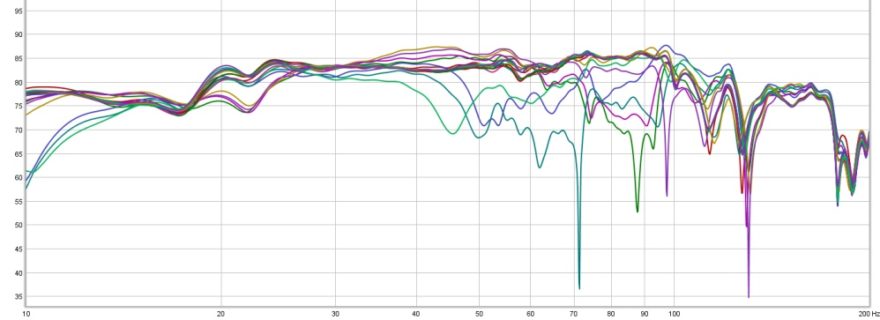
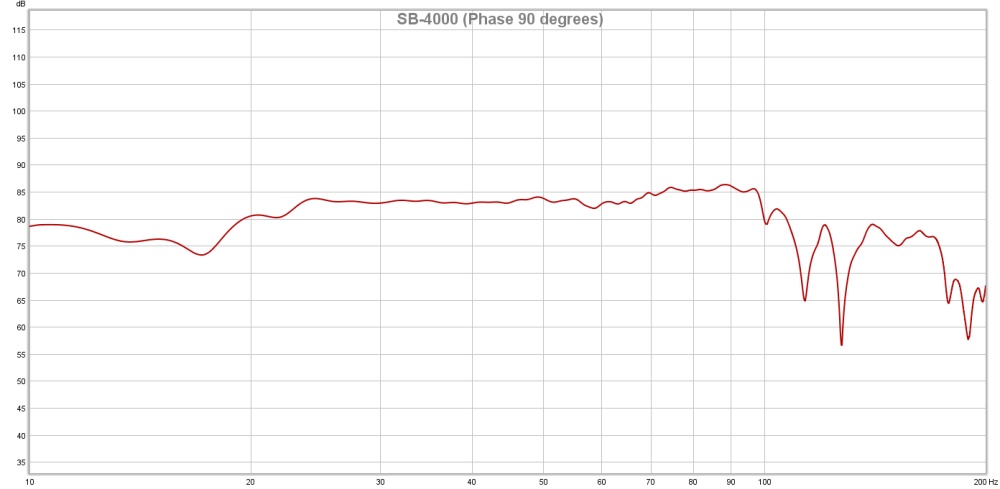
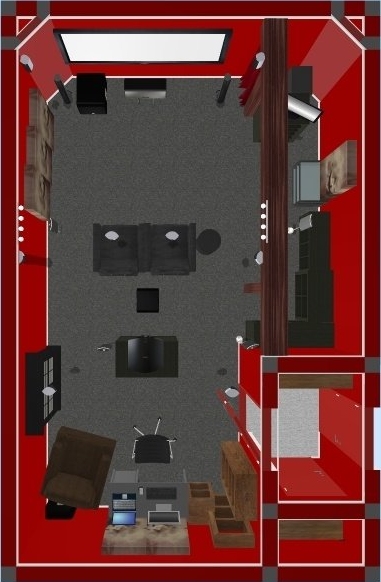
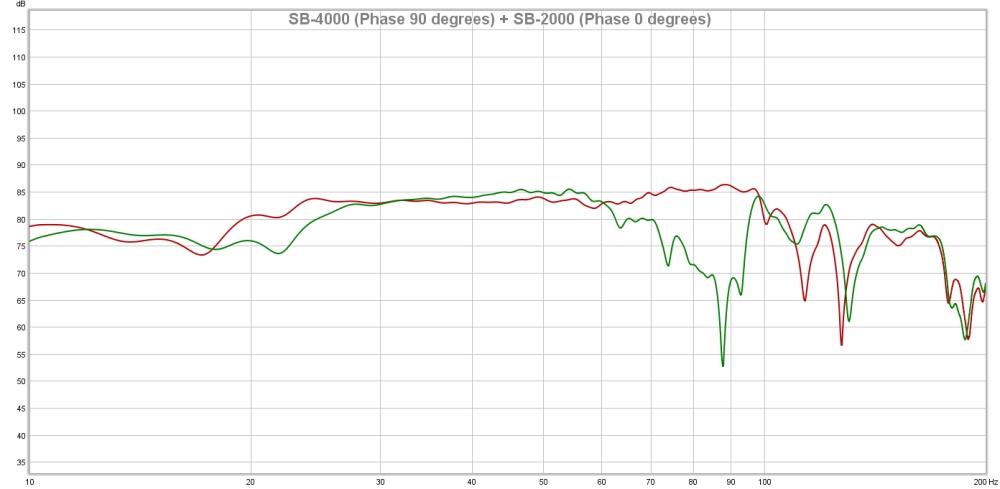
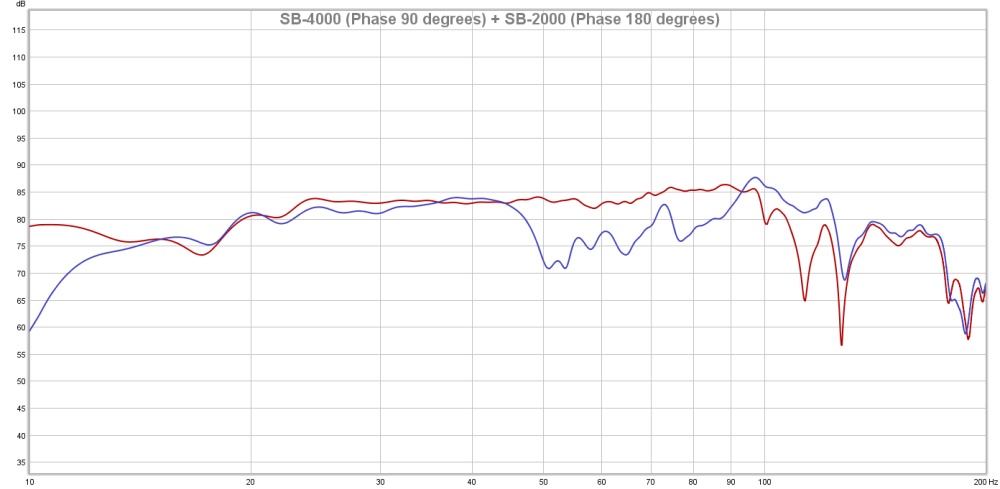
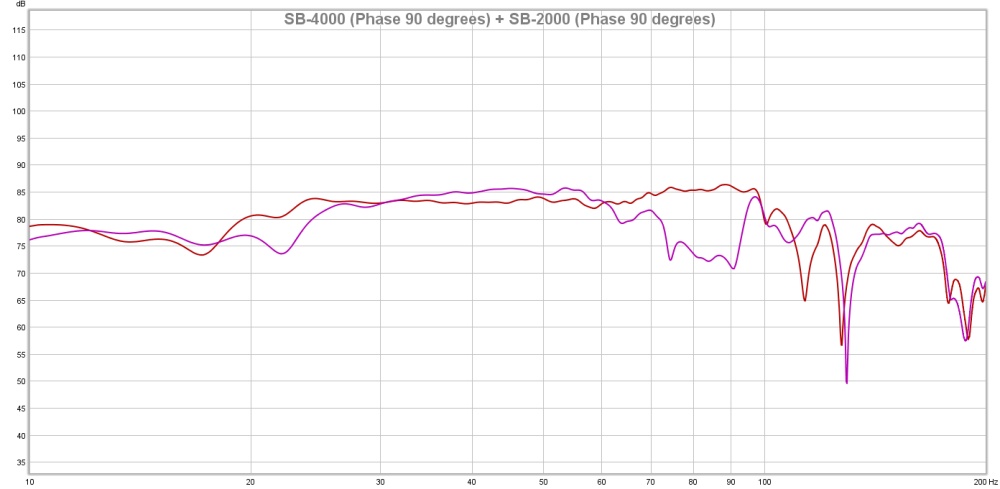
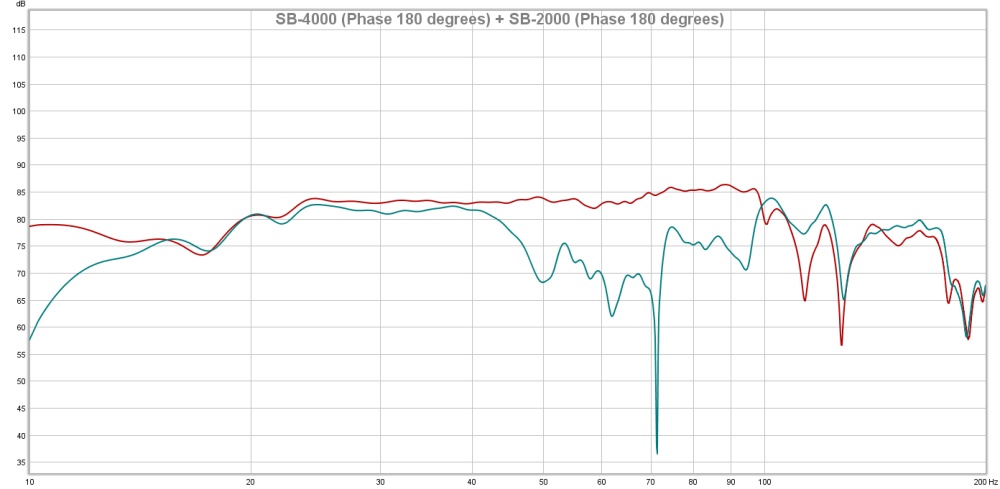
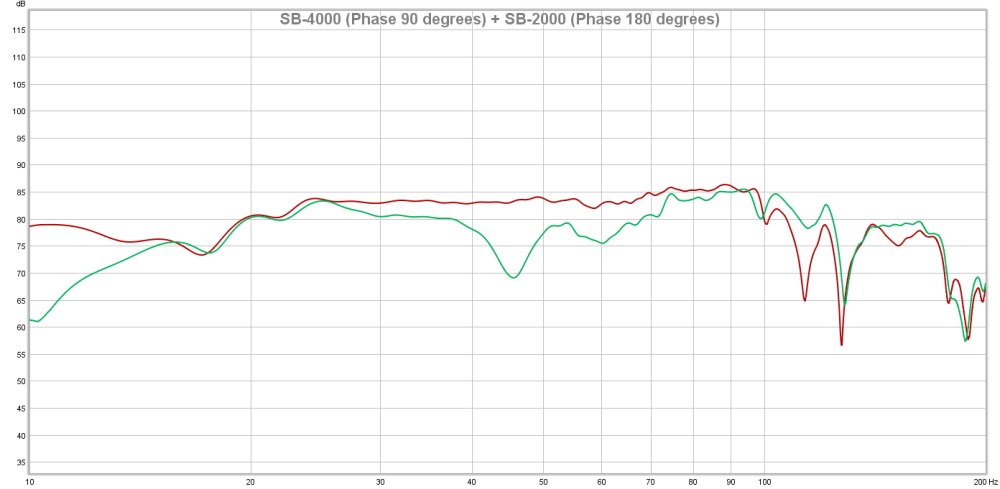
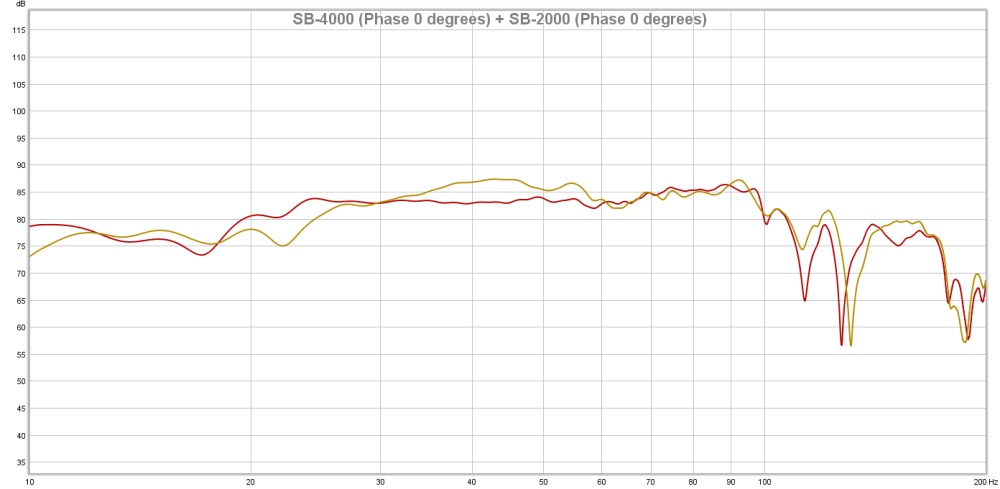

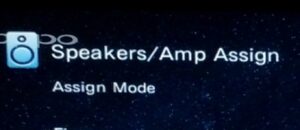
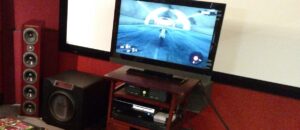
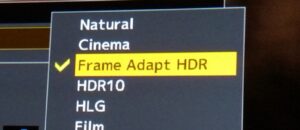
Abe
Thank you Josh; I have two at the front left and right; the room is not a solid rectangle but I may have to try the wireless option to put one of the subs diagonally opposite one day.
Josh Zyber
AuthorIf I’ve learned anything from this project, it’s that theory often goes out the window with practical application. If what you’re doing right now is working well for you, perhaps better not to upend things. It would be worth the effort to measure your frequency response with REW before making any changes.
Abe
Thanks, yes, they sound phenomenal for us novices. Ready player 1 in Atmos from REDBOX(!) last week sounded insane. No dishes fell but whole basement shook. Surprised the Mrs. as well. WAF!
Daniel G
Would be interested to know if you tried any of the other room placement options? Both subwoofers at the front or both subwoofers at the sides of the MLP?
Josh Zyber
AuthorMore experimenting to come.
Scott Simonian
Solution: MANY more subwoofers
😀
Csm101
When you run these tests, is it a series of bass sweeps when you take measurements, or do you put on your favorite bass scenes from movies and take measurements that way?
Josh Zyber
AuthorThe REW software plays test tone sweeps through the AVR. Measured here are sweeps from 20 Hz to 200 Hz.
David
I currently have two 10 inch polk psw’s in the front of the room, one behind my seating area and it sounds great. I got lucky since the room is small and square. I have not seen many 3 sub configurations online, but cant recommend it enough to anybody who wants more bass. I know with the money I have spent, I could of got a 12 inch sub; but it works for me and the wife is not upset, so that’s winning in my book. Just wish polk would lower the price on their all black model sub vs the monitor series I am using now, with the silver trim that screams 2005. They are the exact same speaker for 100 more….. Come on polk!
Chris Kragtwijk
I don’t know what all the problems are about, I am a car electronics/audio and studio freak, professionaly too. I put 2 14yr old ground zero car audio 10″ woofers in 2 seperate identical flat wall cabinets (like DLS, only bit bigger) on the back wall just aft and right above my presonus E66’s in the studio. They are aero vented 33 Liters and I used 2x dsp250’s of dayton, bit of woodwork with black mdf and the router, voila, I can control them digitaly of the pc via usb. In my config I sense the best is 45degrees off set.. It s all spot on and a ton off control. For a customer I think the whole project must be well under a thousand bucks. No ready to go subwoofer system can compete in price nor power. And subwoofers, from my perspective after 20 yrs working with all kinds and prices.. there s realy bad stuff and the rest is in the same game. I can make a cheap woofer in the right config sound like a MF. Maybe ? if you are used to tuning speakers and subwoofers in cars which are THE most difficult surroundings, it is easier to do.. I don’t know, but I always end up with a good result, in cars and studio. Love the experimentation. One golden rule, the less your cabinet and space can flex/resonate (so same for the room) the better the sound. Concrete would be the best, both room and cabinets, walls only lined with anti reflective and basstraps here and there. Acoustics are a must inside and outside the box, as in your car KILL THE WHOLE SPACE, you will notice.
John Daddabbo
You seem to be focused on the Frequency domain. May I ask if you have addressed the Time domain? For instance, have you insured that both Subs are Time aligned with each other and to the Main speakers? For it is only then that the Phase control can do its best.
Josh Zyber
AuthorThis post is about a year old. Since that time, I have actually managed to integrate a two subwoofer solution by changing the placement of the second sub, which gave me decidedly better results. I will try to write up a post about that at some point.
Felix Alexander Wong
According to the Harman study on multiple subs done by Todd Welti, placing the second sub in the middle of the room puts it in the null point of the first axial mode which results in no excitation, which corresponds with your results.
Going to look for the follow up to this, if you’ve published it already. If not, that’s understandable since I’ve been spending copious amounts of time tuning and tweaking my dual sub setup too; they’re both very different units (one 8″, another 18″).